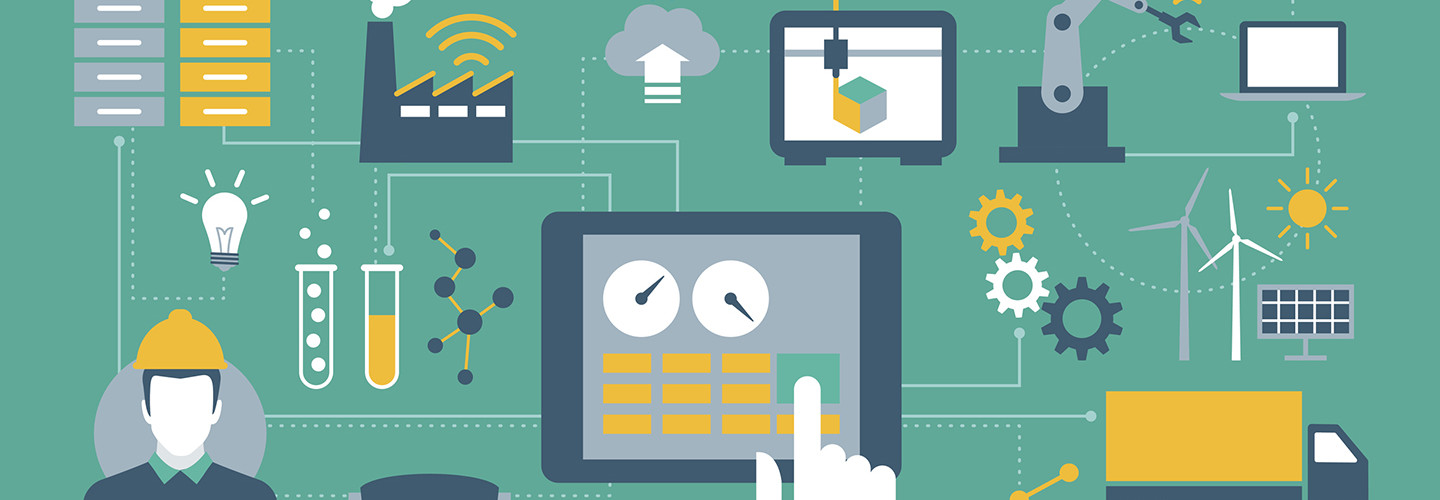Campus Technology 2017: The Connected Campus Will Reshape College Life
The Internet of Things is just starting to appear on college campuses, but as the technology matures, applications will be limited only by users’ imaginations. That’s the prediction of Lisa Litherland, a CDW•G business architect who helps institutions create roadmaps for IoT implementations.
Litherland presented “How to Make Digital Transformation Happen with IoT” on Tuesday at the Campus Tech conference in Chicago.
Acknowledging that users may define the IoT in various ways, she explained it as a convergence of IT and operational technology that “is connecting the unconnected” (think consumer tools such as Google Home or the Nest thermostat). Although early applications focus on the “things” themselves, the IoT’s real potential will arise from the data that all these connections provide, Litherland said. That, in turn, will support analytics-driven insight and better decision-making.

Whatever form the IoT ultimately takes on campus, providing adequate protection will be paramount, she said, responding to an audience member’s question about the role of security in this new landscape.
“Security is something that has to be wrapped into all the different pieces of this,” Litherland said. “What we’ve found so far is that we take a very similar approach as any other networking: We don’t provide security at the ‘thing’ level. It’s reinforcing that network with a layered approach.”
SIGN UP: Get more news from the EdTech newsletter in your inbox every two weeks!
Smart Devices Create a Better User Experience
The IoT may still be in its infancy, but institutions are already leveraging smart devices to solve problems on campus. These range from the practical, like making it easier to find a parking spot in a crowded lot, to the experiential, such as providing wayfinding tools that ease anxiety for students coming to campus for the first time.
In smart parking, beacons or cameras identify available parking spots and share that information with drivers through red and green lights on digital signage. Mobile app integration lets drivers find out before they even get to campus where they can find a spot, Litherland says.
Wayfinding applications employ real-time locating service technology via beacons, which emit signals to smartphone apps that give turn-by-turn directions to help visitors navigate campus.
“You could ideally outfit an entire university campus with this beacon technology, and then I can figure out how to get from where I am right now to a building across campus and to the room where my class is,” Litherland said.
IoT Enables Proactive Campus Security
Physical security applications also are emerging as a potentially robust use of IoT technology, and one that could help colleges be more proactive when it comes to incidents like campus shootings. Tools such as facial recognition, integrated access control, video analytics and large-scale monitoring of video data all may shift security tactics from forensic, after-the-fact investigation to proactive prevention.
For example, analytics software integrated with a video camera monitoring a specific part of campus has the capability to detect any changes in that area. If someone left a backpack outside the building, the software would detect this anomaly and alert an officer to investigate.
Analytics also gives staff the ability to monitor video feeds on a much larger scale — still relying on human insight to make decisions, but empowering users to efficiently parse through data, Litherland said. “Now, instead of monitoring 20 to 30 video feeds, they can monitor 200 to 300 because the video analytics monitors when something is happening and brings that to the forefront.”
IoT Solutions Make Buildings Smarter and Safer
The IoT also holds promise for building automation solutions in areas such as energy conservation. “Some of these pieces are already out there, but we’re still in the very early stages of this,” Litherland said.
On the energy management front, users can look for software that sees what is connected to the network and powers items down when they aren’t in use to conserve energy. Connected lighting indoors can automatically adjust for optimal ambiance. Innovators in the IoT space are working to bring together facility applications into a single system.
Colleges may gravitate toward smart buildings for potential cost savings — it’s one of the quickest ways to earn return on investment in an IoT program, Litherland said — but the “connected student” and the “connected campus” also are on the horizon.
“As we look at connecting all this technology, I want you to think about what is that going to look like?” Litherland said. “It could be the students, staff and faculty are connecting to everything through the smartphone, but that may or may not be the form factor we use to connect everything.”
As alternatives that might materialize, Litherland pointed to radio frequency identification — for example, a card-based RFID chip that would grant facilities access based on authorizations or biosensors like an RFID chip that students might wear on their skin in the form of a sticker. The connected campus, likewise, may take forms that are impossible to predict today, she said.
“What do we do with that data that the things give us?” she said. “We’re really just scratching the surface with what we can do with that data, the analytics we can run and how we tie all those pieces together in a comprehensive platform across the university.”
Catch more updates from Campus Technology 2017 on EdTech's official event page.








